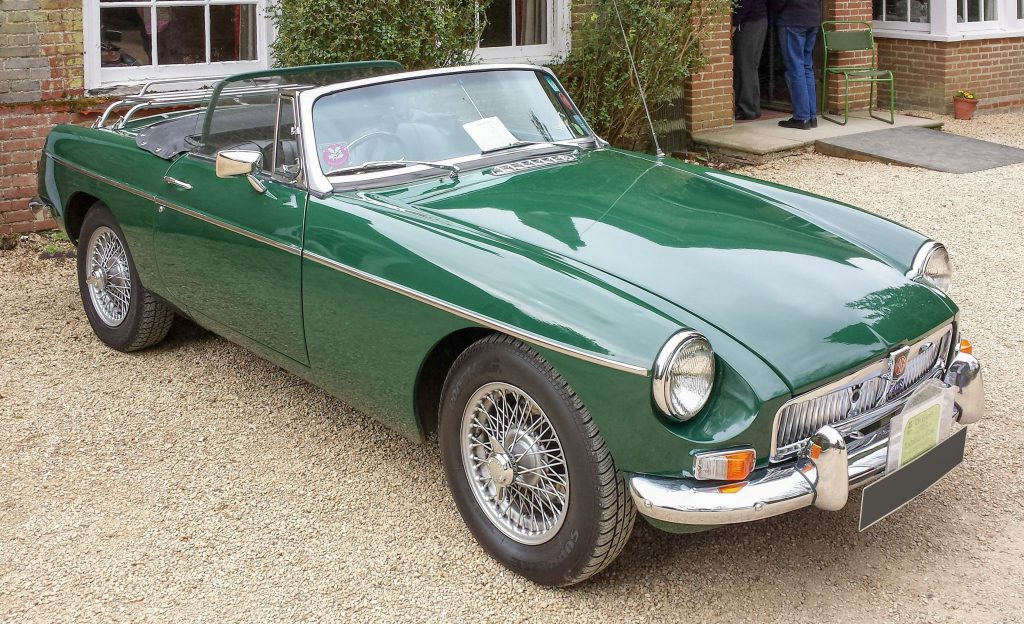History
If you could name only one British roadster, chances are it would be the MG B. It was presented in 1962 as successor to the MG A. Power came from a 95 hp 1.8l four-cylinder engine. The coupé (actually hatchback) GT was added in 1965. From 1967 to 1969, it was sold as MG C/MG C GT with the Austin Healey‘s 3l six-cylinder engine, an engine that wasn’t well suited for such a lightweight car. A much better solution was Rover’s lightweight V8, which became available in 1973 in the MG B GT V8, and was built until 1976. The aluminium V8 was lighter than the four-cylinder despite providing a 50% power increase. The V8 was not exported to the US and hence never sold as left-hand-drive version.
Major revisions were the Mk II (late 1967, new gearbox among other changes) and the Mk III (1972, e.g. new dashboard). The USA were the most important market for the MG B. New regulations for 1974 required MG to drop the chrome bumpers, replacing them with the infamous rubber bumpers that created the “rubber boat” look. Luckily, conversion kits to the old-style bumpers do exist. The MG B continued to be for sale in this state until 1980. A successor, the mid-engined MG F, only arrived in 1995.
Performance
The four-cylinder had a respectable 0-100 kph time of a bit above 11s with a top speed of 160 kph. The V8 offers much better performance, with a 0-100 time below 8s and a top speed in excess of 190 kph.
Pros
The quintessential British roadster – also available with a fixed roof for convertible haters like me. Small, lightweight, decent power (especially as V8). Long production run with more than 500,000 built run results in very good availability of cars and parts for decent prices.
Cons
Rust, of course. Not as refined as some other offerings (Alfa Spider). If you want a small lightweight roadster but something older than an MX-5, this should be your first pick. Or go GT if you want a fixed roof.
My pick
GT V8, despite it having the steering wheel on the wrong side.
